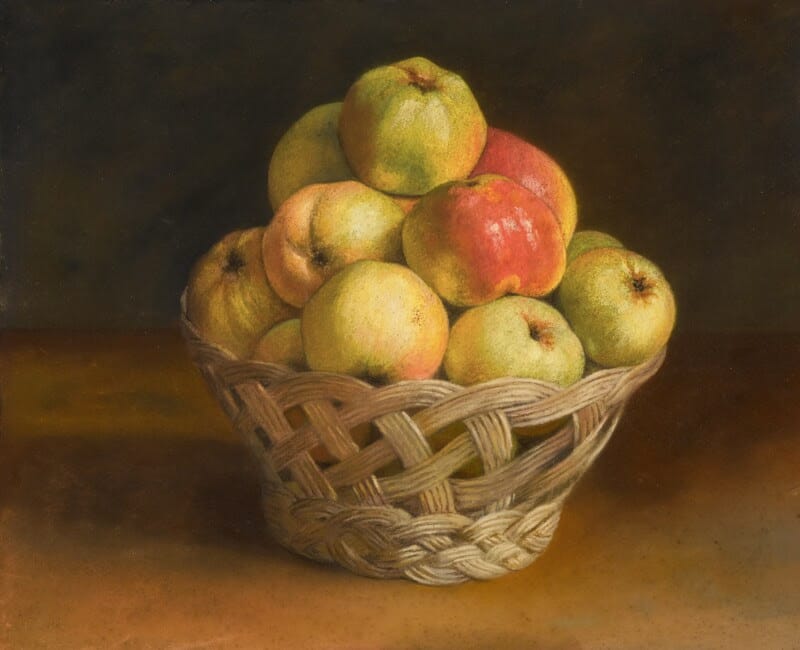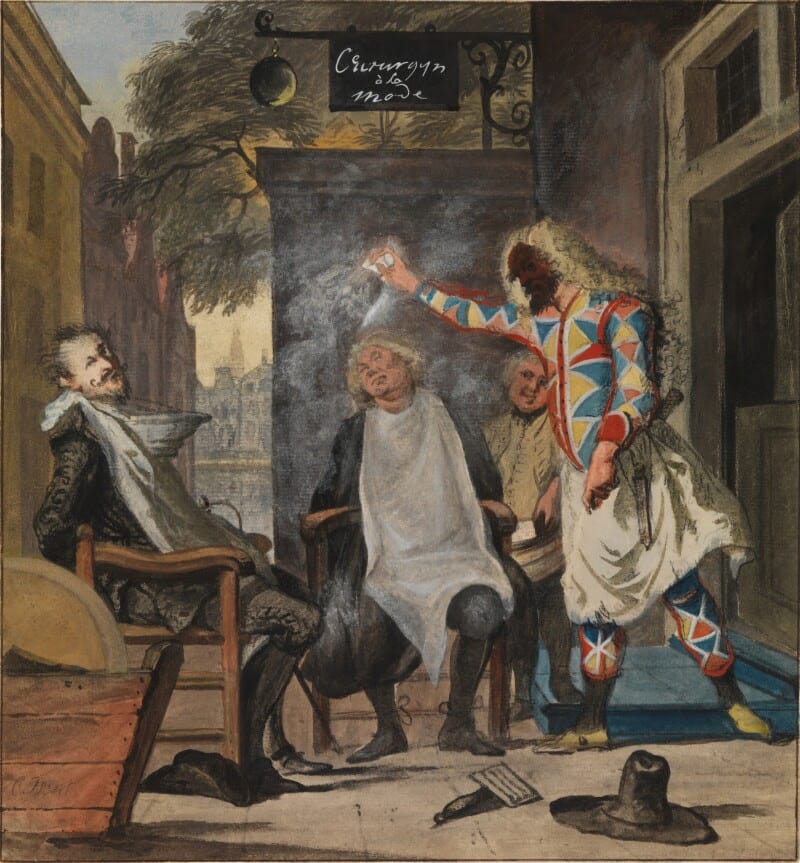MASTER WORKS ON PAPER FROM FIVE CENTURIES
The Art of Pastel: A Swiss Private Collection

Masters Week is also distinguished by an extraordinary and unique collection of pastel drawings. An often neglected medium today, pastels were a key art form in the 18th century, immensely admired for their atmospheric qualities and technical difficulty.
Leading the group is an extraordinary still life depicting a basket of apples, by the greatest and most enigmatic master of pastel, Liotard. Jardinière de Pommes dates to circa 1786, and, whilst simple and unpretentious in composition, demonstrates the artist’s extraordinary abilities of observation and mastery of the medium. The work draws parallels with artists such as Cezanne, but also reflects earlier masterpieces of still life by Caravaggio and Melendez, and those of contemporaries such as Chardin. This work is the finest of very few still lifes created by Liotard, all dating from very late in his life, the likes of which have not previously been seen at auction (estimate $1,200,000 – $1,800,000).
There is also a flamboyant portrait of a lady holding a fan by Maurice Quentin de La Tour (est. $200,000 – $300,000) an elegant portrait of English nobleman Joseph Spence by the Italian pastellist Rosalba Carriera (est. $40,000 – $60,000), and a surprisingly minimalist and modern Swiss landscape, one of the largest ever completed by celebrated artist Elisabeth Louise Vigée-Le Brun (est. $20,000 – $30,000).
The Collections of Seymour Slive and Ton van den Broek:

Described by Harvard University President as ‘a living portrait of ebullient erudition and human inspiration’, Seymour Slive was the first art historian trained in the United States who specialized in 17th-century Dutch art. Lecturing at Harvard University from 1954-1991 and also serving as director of the Fogg Art Museum from 1975-1982, Slive was the father figure of his discipline, inspiring and mentoring generations of scholars and curators of Dutch art in the United States and beyond.
This season’s sales include a number of paintings, drawings and prints from the collection of Seymour Slive and his wife Zoya, notably a rapid sketch by Jacob van Ruisdael, an artist on whom Slive was the world authority, and a rare painting by Jacob’s father, Isaack van Ruisdael.
There is also a group of works carefully assembled by Haarlem native Ton van den Broek, whose primary profession was gentlemen’s outfitting, but who developed an all-engrossing passion for the history and visual arts of his native city and country. The collection includes an outstanding selection of 16th -18th-century Dutch drawings and watercolours, including a captivating work by one of the defining artists of the Dutch 18th century, Cornelis Troost. ‘Harlequin, Magician and Barber: The Deceived Rivals’ (est. $100,000 – $150,000) illustrates, with Troost’s typical genius for storytelling, a scene with origins in the Italian Commedia dell’arte tradition; a cast of stock characters who crop up in these farcical scenes across the stages of Europe from the very early 18th century. A larger version of this subject, dated 1738, is held in the celebrated pastel collection at the Mauritshuis, the Hague.
A Rare Work at the Intersection of Christianity and Science:

The sale will also present a large red chalk study of The Madonna of the Zodiac (est. $100,000 – $150,000), a unique work depicting a subject that was not only theologically controversial but extremely rare. The delicate drawing is newly identified as a major work by the rare renaissance draughtsman Daniele da Volterra, best known for his close relationship with Michelangelo towards the end of the latter’s life. Michelangelesque in its grandeur and monumentality, the drawing is believed to be dated to the 1550s, completed after the artist’s Assumption of the Virgin, in the della Rovere Chapel at the Trinità dei Monti in Rome, which occupied him from 1548 and was still incomplete by 1553.
The rare iconography of the sheet includes the Madonna depicted in profile – with the Christ Child to her right – indicating the Zodiac with both hands alluding to Christ’s role as ‘chronocrator’: Lord of Cosmic Time. The signs of Scorpio and Sagittarius can also be seen to the left of the Madonna who rests her right foot on a cloud over a crescent moon. The intriguing historical relationship between science and Christianity was perceived differently at different times, and not surprisingly was also often seen as a contentious combination in the context of the visual arts. Therefore, we can suppose that this rare subject must be the commission of a cultivated and refined patron particularly interested in astrology.
